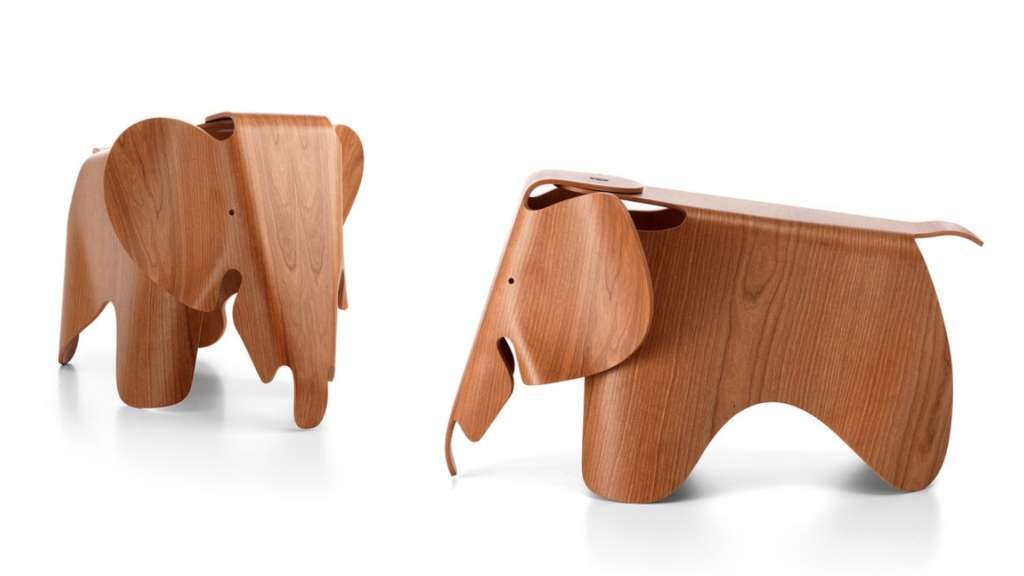A new technology is a new toy. “Toys are not really as innocent as they look. Toys and games are the prelude to serious ideas.”
So said Charles and Ray Eames. The Eames ran a design studio in California (1943–1988) producing architecture, films, furniture. Arguably their most well-known piece was the Eames Lounge Chair. The chair, produced by Herman Miller, ushered in a new era of materials and is a valuable collector’s item today. It’s impossible to overstate this. It was impossible to make furniture that way before Eames. But this story isn’t about a chair.
This story is about a toy elephant.
A decade before the Eames molded wood for a Herman Miller chair, they were playing with molding processes in toys. The result? The Eames Elephant, a toy intricately crafted from molded plywood. The complexity of the elephant was foretold by dozens of unnamed playful experiments. The elephant itself foreshadowed the lounge chair. Without play, without toys, the Eames would never have mastered the underlying skills that produced the later masterpiece.
Playtime is fertile ground for innovation.
The power and necessity of play is a cross-discipline truth. In music, Miles Davis once said “I’ll play it first and tell you what it is later.” In biology, Alexander Fleming often said “I like to play with microbes.” Physics? Andre Geim stated the “playful attitude has always been the hallmark of my research.” The final word on this human condition goes, appropriately enough, to the psychologist Carl Jung. “The creation of something new is not accomplished by the intellect, but by the play instinct arising from inner necessity. The creative mind plays with the object it loves.”
A pilot is purposeful play. We need to pilot ideas and technologies as we frame up the security capability. To get the best work, people doing the pilot must be dedicated, be engaged, and enjoying themselves. As leaders, we clear calendars and make space. We also need to clear bureaucracy and other hinderance to fun. As implementers, we need to clear our heads and reach a state of flow. The purpose of a pilot is to improve our understanding of how things work, and to build underlying skills for what we’ll build next.
See Scale with Philosophy and Methodology for insights on managing the chaos. In the article, I compared Charles and Ray Eames to hackers. I easily imagine them at home in hackerspaces or hacker cons. The Eames embodied the hacker ethic years before “hacker” was even a term. Hands-on. Learning by doing. A strong sense that work, be it design or be it computing, changes the world when we love what we are doing.
The elephant in the room is the best pilot projects won’t look anything like work.

This article is part of a series on designing cyber security capabilities. To see other articles in the series, including a full list of design principles, click here.
Posted by